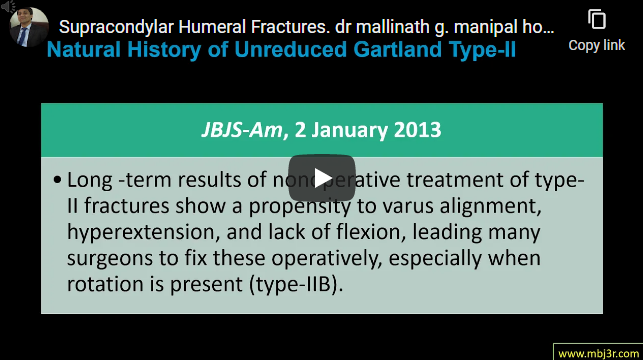- Most commonly seen in children aged 5-7 years with fall on out stretched hand
- Extension type is seen >95%
- Gartland Classificaiton is used to classify extension type of SCH fractures
- Always check for distal pulses
- If palpable pulses do not return, but the limb is warm and pink and/or pulses are Dopplerable, the patient may be observed for 24 to 48 hours to assure perfusion and rule out compartment syndrome
- Presence of nerve deficits to raise the suspicion of compartment syndrome
- The intra-articular injection of 0.25% bupivacaine significantly improves postoperative pain control following the closed reduction and percutaneous pinning of supracondylar humeral fractures in pediatric patients
- Percutaneous pinning is treatment of choice in closed fractures without neurological deficits

